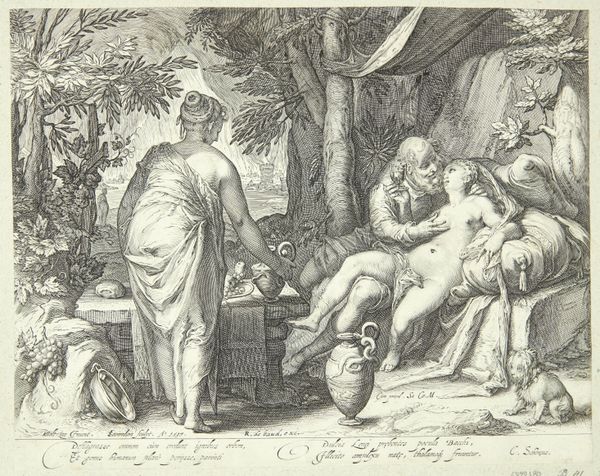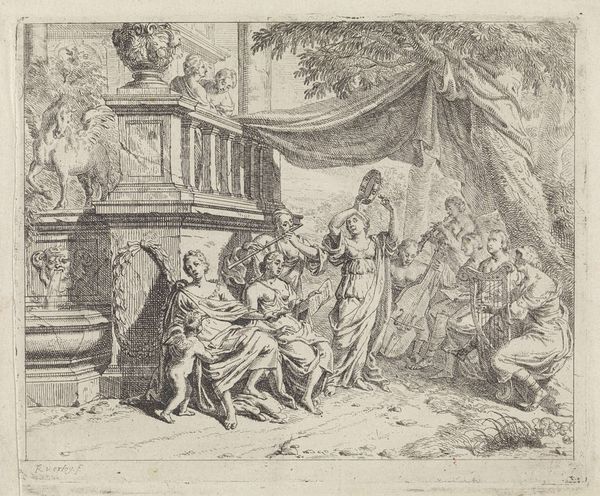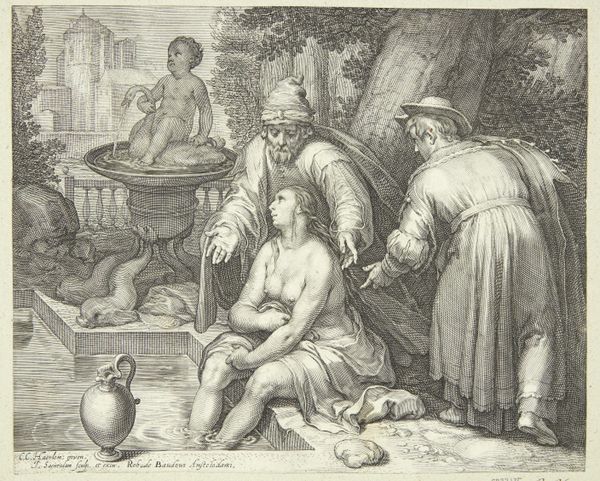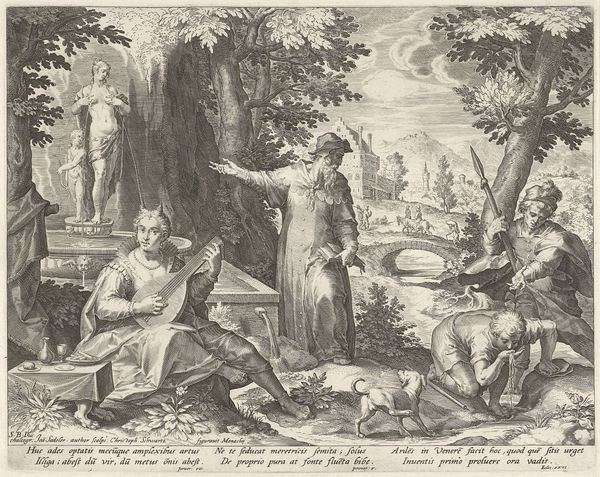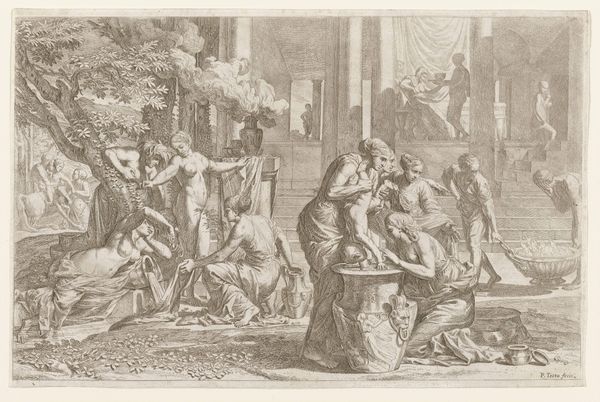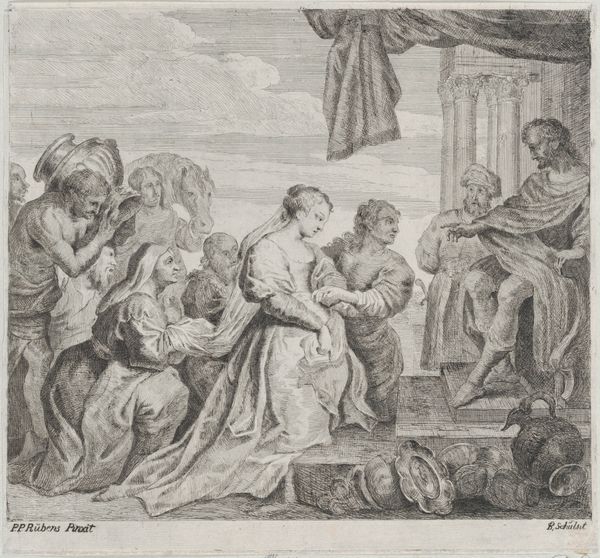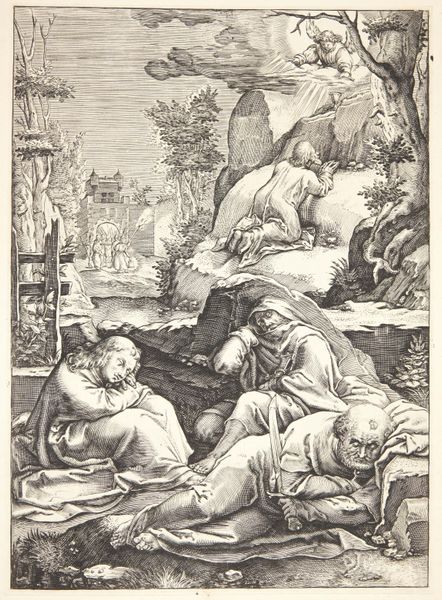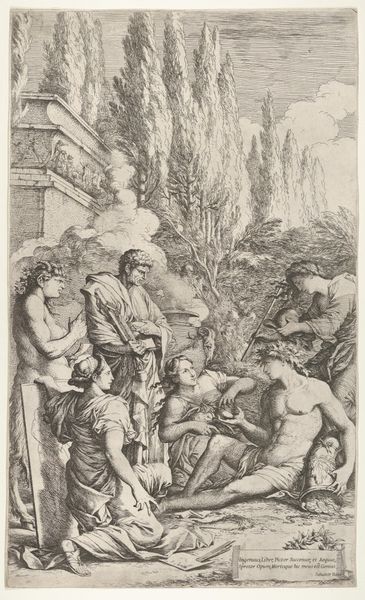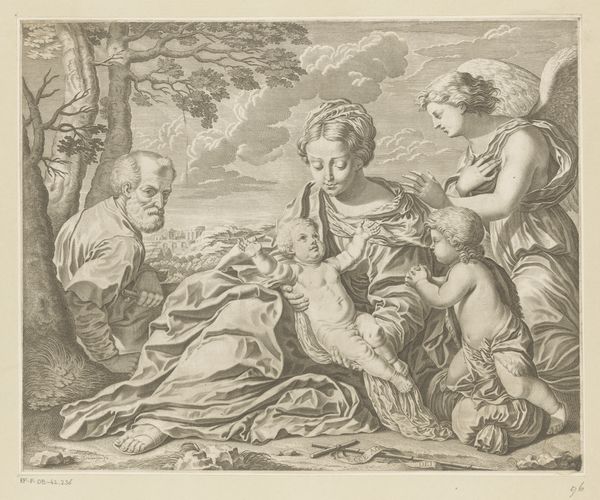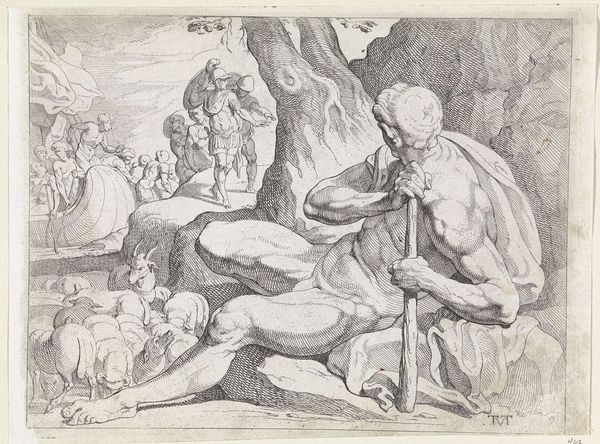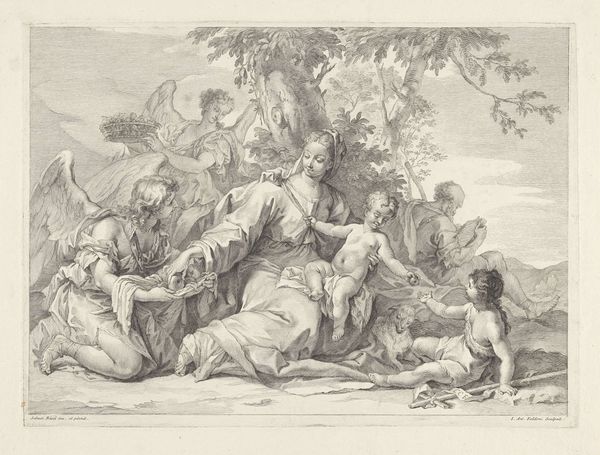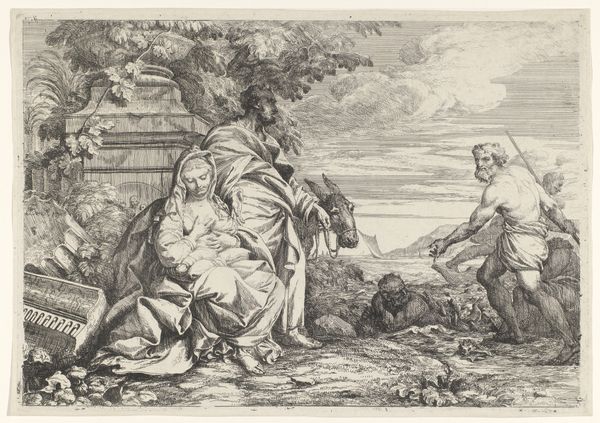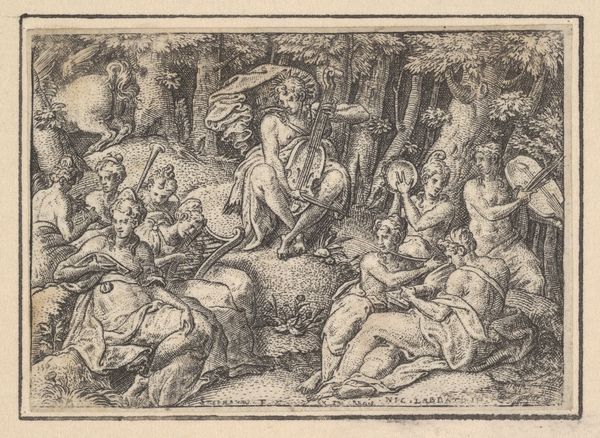
print, engraving
#
baroque
# print
#
figuration
#
genre-painting
#
history-painting
#
nude
#
engraving
Dimensions: 195 mm (height) x 264 mm (width) (bladmaal)
Editor: This engraving, "Lot and His Daughters" by Jan Saenredam, created around 1597, really captures a sense of debauchery. There’s something so unsettling about the contrast between the landscape and the actions of the figures. What do you see in this print? Curator: It’s fascinating to consider the means of production and how it relates to the artwork’s overall meaning. Think about it: engravings, at this time, were about dissemination. This print, with its scandalous subject matter, was meant for a relatively broad audience. Consider how the materiality – the ink, the paper, the very act of repeated printing – serves to amplify this narrative of moral decay and its social distribution. Editor: So, the act of creating multiple copies almost *encourages* the spread of the story? I hadn't thought of that. Does the subject matter – the biblical story – play into that idea of consumption as well? Curator: Precisely. The Bible was becoming more widely available at this time, due to the proliferation of printed books, and engravings helped disseminate biblical narratives to even wider audiences. However, consider the implications. The story's salaciousness certainly provided another type of "value" for potential consumers of the print, in addition to spiritual edification. Note that it can hardly be described as such though. Editor: That makes a lot of sense! So, understanding the printmaking process gives us insights not just into the art itself, but also into how it was viewed and used by people back then. Curator: Exactly. What we perceive, on closer inspection, is not simply the portrayal of a Bible scene, but a commodity for the modern, emerging early-capitalist consumer. Editor: That's really changed how I see this piece. I appreciate that insight. Thanks!
Comments
No comments
Be the first to comment and join the conversation on the ultimate creative platform.
